Hyundai has brought back the Tucson, replacing the iX35 with the name that originally shone on the rear of its mid-range SUV. However, the difference in the new model is much more than the name. This new SUV has significant styling and structural changes which combine to make it look much better.
Hyundai has landed the Tucson ahead of its obvious rival, the Kia Sportage. Both share technical features, but with subtly different styling. I’ve had the new generation Tucson with its entry level 1.7-litre turbo-diesel engine on the road in recent weeks. The immediate differences are obvious and the new front grille gives the Tucson a stronger look than the iX35 and matches the styling of the larger Santa Fe.
The Tucson feels bigger than the iX35 that it replaces. It’s marginally longer and wider, even though it’s a little lower. The wheelbase has also been extended with a new platform that underpins the car. These changes bring extra space on the inside, and more legroom and shoulder room. The boot is bigger, up by 10%, giving it an impressive space relative to the competition.
The new Tucson loses some weight, and despite that it brings with it marginally greater towing ability, up from 1.2 to 1.4 tonnes. Coupled with this is a hill start assist system and trailer stability control. And the new Tucson gets a bigger fuel tank, so the range with the full tank should now be close to 1,000km, but hardly with the trailer in tow.
There are few changes to the engine in terms of power, while it has marginally more torque. The more important feature is the extra economy, an improvement of 15% on paper, that also transferred to reasonable economy on my relatively shorter than normal test drive. That economy level at 22km/litre (4.6l/100km or 62mpg) puts the new Tucson in line with the competition. The changes to the engine have shaved 20 units of CO2 emissions from the car, bringing the annual road tax costs down to €200 based on 119g/km of CO2.
This new version is marginally slower in terms of acceleration than the older ix35 model. Not that I noticed it much, to be truthful. Overall, the driving impression is better, with smooth gear changes from the six-speed gearbox and easy clutch movement. There was adequate legroom around the pedals and overall there is a good feeling when driving.
Hyundai has a new steering for the Tucson, with an electric powered motor mounted on the steering rack. This gives scope for two settings, normal or sport steering, which can be engaged by a button beside the gear lever. Overall, I found the steering a little unsure, especially on smaller rural roads and I feel that it could take a little getting used to. That part I was not very comfortable with.
Hyundai claims to have boosted the brake discs and cylinder to improve stopping distances, but looking through their own brochures the impact is a mere 0.4m better. The car has six airbags and came out of a recent Euro NCAP crash test with five stars.
The entry price for the diesel model in two-wheel drive format is €26,995 (£20,195 in NI), which is about €1,000 more than the outgoing model. Overall, the price is competitive relative to the Nissan Qashqai and Toyota Rav4 – the two leaders in the segment.
I reckon that given the fuel economy, depreciation at 30% and service costs that over a three-year, 45,000km period, the ownership costs will be close to €0.30 per km or €13,638. The depreciation has a big impact on the ownership costs. Could this new Tucson perform better than the iX35 and give a lower overall cost? That remains to be seen, and the retention of the five-year unlimited mileage warranty will help.
You will need to go up the specifications ladder and opt for the more expensive Executive grade models to get any of the bells and whistles, which can include satnav and reversing camera, and that adds €3,000 to the price. If you want four-wheel drive, then the larger 2.0-litre diesel engine is the only option, but it costs €8,500 more or £5,600 in Northern Ireland.
The base car is reasonably well equipped. I was especially impressed by the fact that there’s a full size spare wheel under the boot floor and parking sensors. Some, like me, will even be impressed by the fact there’s a traditional handbrake.










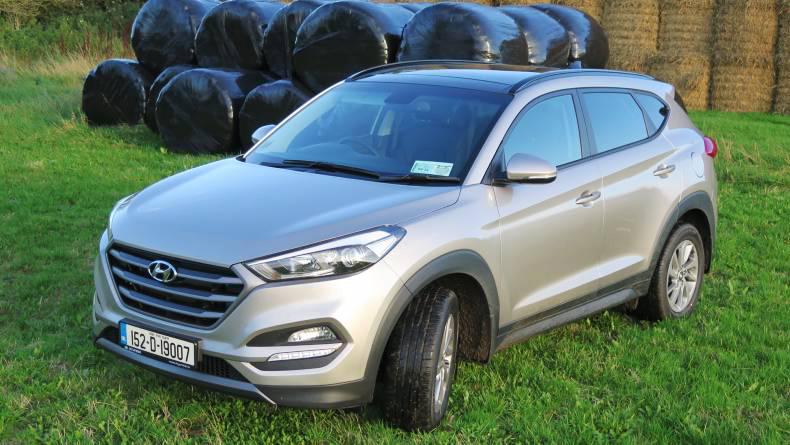
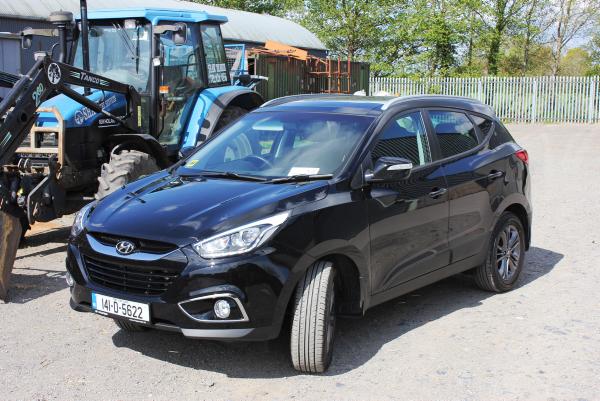

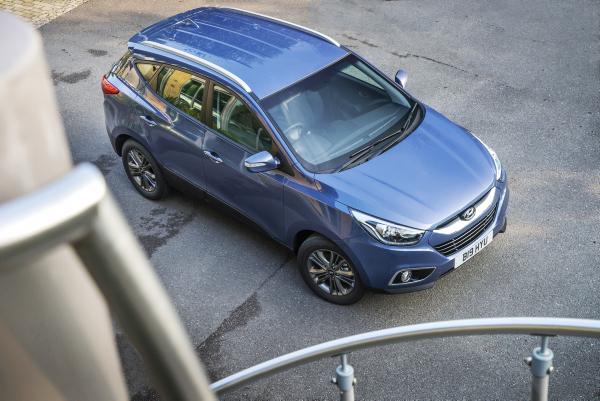
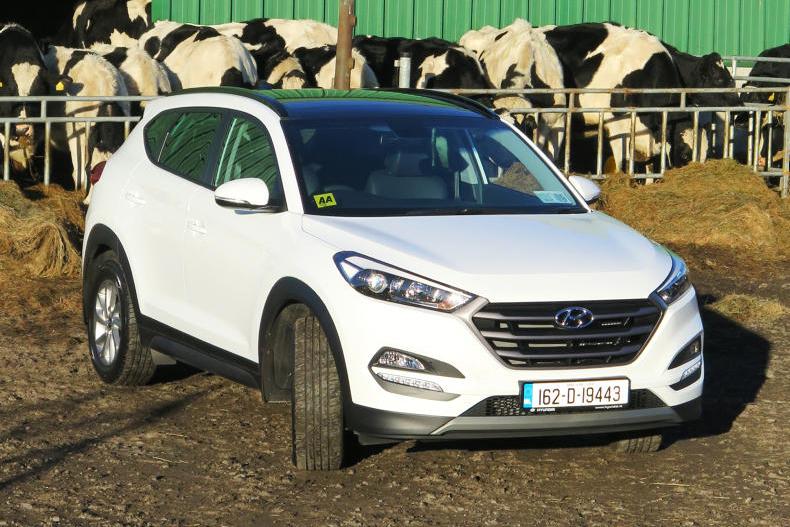
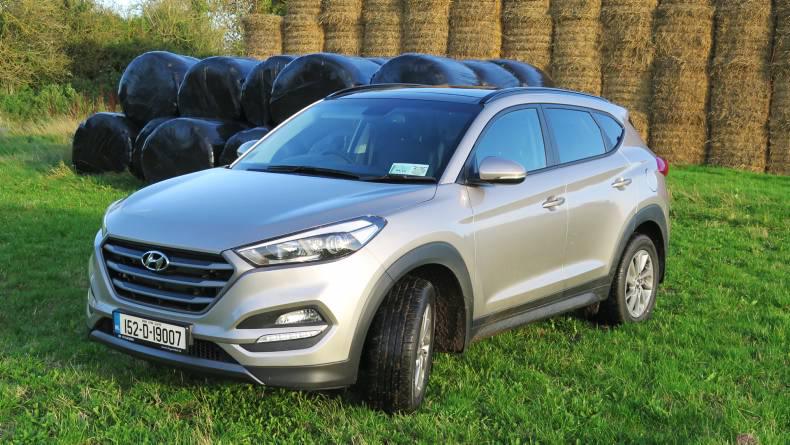
SHARING OPTIONS